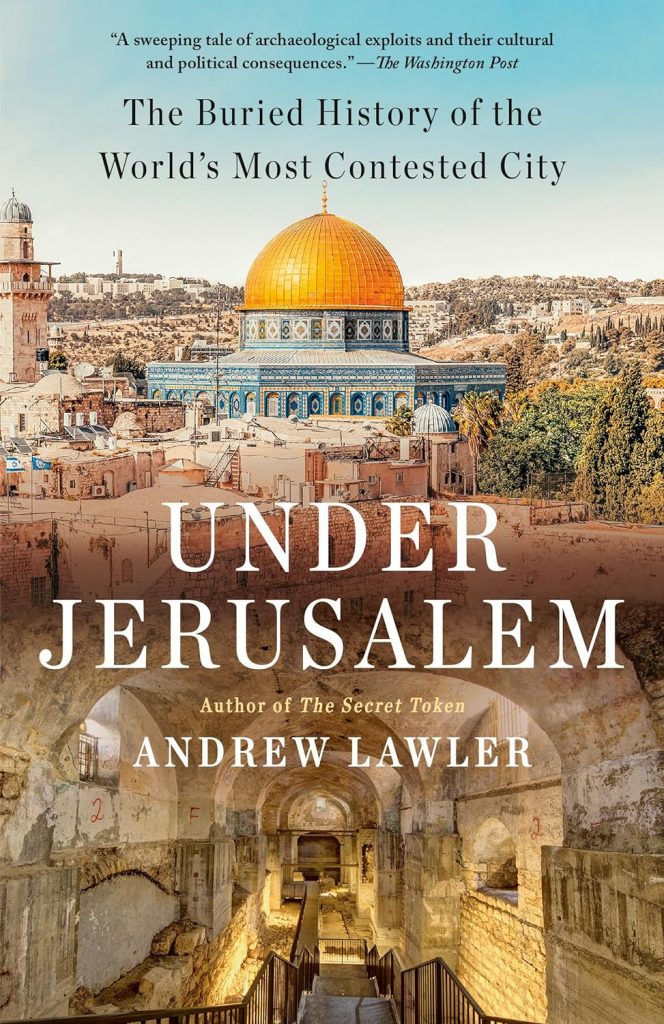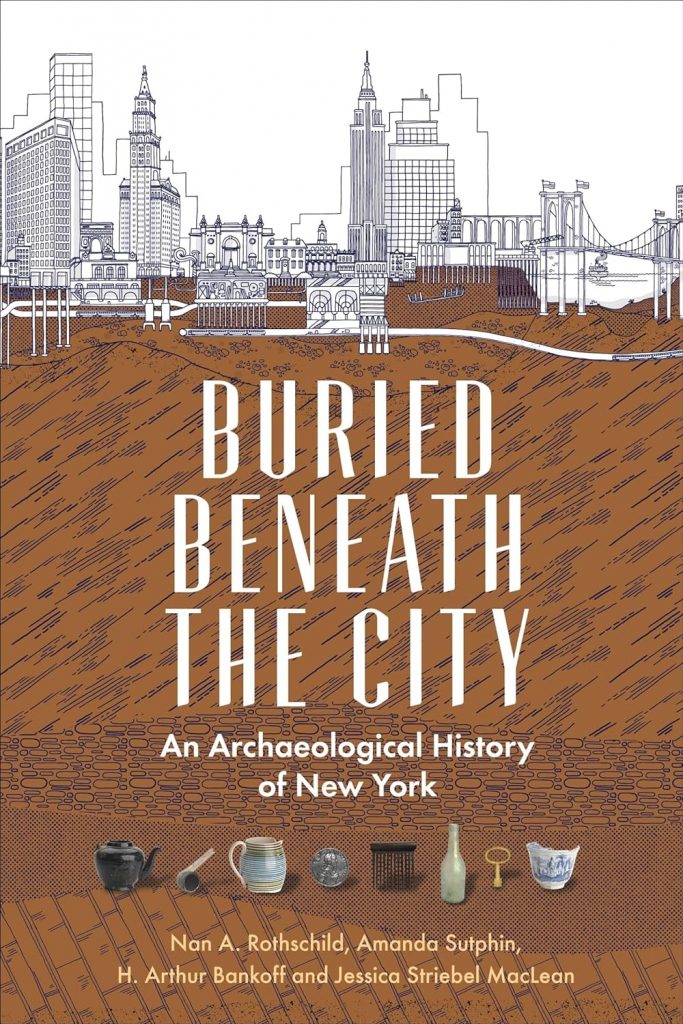February 13, 2024
Looking for some new reading material to get through the last few weeks of winter? Check out our Holton Book Award winner and honorable mention for some engaging reads to learn more about archaeology!

Holton Book Award Winner: Under Jerusalem: The Buried History of the World’s Most Contested City by Andrew Lawler.
Explorers and archaeologists are responsible for turning Jerusalem from a sleepy Middle Eastern town into the world’s most contested city. The search for the biblical past by Americans and Europeans helped spawn the rise of Jewish Zionism in the late 1800s, the creation of the state of Israel in the 1940s, and the subsequent uprisings and wars. Excavations in Jerusalem continue to shape the bitter conflict over who controls the city–and, perhaps, could someday provide a roadmap for peace.
What drew you to archaeology?
Andrew – Growing up in southeastern Virginia, I was surrounded by history and archaeology. I always had a particular fascination for the period when humans began to build cities, but it wasn’t until I was on an MIT/Harvard journalism fellowship in the late 1990s that I began to study the discipline. Soon I was writing popular articles for Science, Archaeology, National Geographic, Smithsonian, and others about excavations in Iraq, Iran, Afghanistan, Lebanon, Syria, and Egypt, as well as covering cultural heritage disasters in the wake of the Afghan War, the Iraq War and the subsequent growth of ISIS.
Tell us about your history with the AIA:
Andrew – The AIA’s meetings have long been a mainstay in my reporting. These gatherings give me a chance not just to hear the latest finds, but to meet researchers and learn more about their present and future projects. For an archaeology journalist, they are a wonderful one-stop shop.
What’s next for you professionally?
Andrew – I’m currently working on a new book about a largely unknown piece of the American Revolution slated for publication in early 2025. Stay tuned!
How did you get started with your publication?
Andrew – I long avoided Jerusalem in my archaeological coverage of the Middle East. It seemed so complicated and fraught. But then, with encouragement from Israeli Finkelstein, an Israeli archaeologist who took me on an extended tour of excavations beneath the city, I realized that this is precisely what makes the city so unique and interesting–the intersection of science, politics, and religion in one place.

Holton Honorable Mention: Buried Beneath The City: An Archaeological History Of New York by Nan A. Rothschild, Amanda Sutphin, H. Arthur Bankoff, & Jessica Striebel MacLean.
Buried Beneath the City uses urban archaeology to retell the history of New York, from the deeper layers of the past to the topsoil of recent events. The book explores the ever-evolving city and the day-to-day world of its residents through artifacts, from the first traces of Indigenous societies more than ten thousand years ago to the detritus of Dutch and English colonization and through to the burgeoning city’s transformation into the modern metropolis. Lavishly illustrated with images of objects excavated in the city, Buried Beneath the City is at once an archaeological history of New York City and an introduction to urban archaeology.
What drew you to archaeology?
Amanda – I have always loved history and as a child loved discovering old things so archaeology seemed like the ideal profession.
Tell us about your history with the AIA:
Amanda – I was involved with the AIA as a college and graduate student but moved away from it when I started focusing on New York City archaeology and joined other groups that focused on similar topics. However, John Yarmick is an AIA board member and volunteers at the NYC Archaeological Repository and he convinced me to re-join.
What’s next for you professionally?
Amanda – Great question- we are continuing to add collections and introduce the work of the NYC Archaeological Repository: The Nan A. Rothschild Research Center to more audiences and are actively fundraising so more work can be accomplished.
How did you get started with your publication?
Amanda – An editor with Columbia University Press approached us in 2016 when she read about the the launch of nyc.gov/archaeology (the public-facing website that shares our collections). It was originally to be a “50 artifacts representing NYC’s past” book but became much more.
Questions? Learn more about AIA Awards here or reach out to awards@archaeological.org